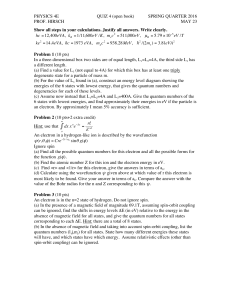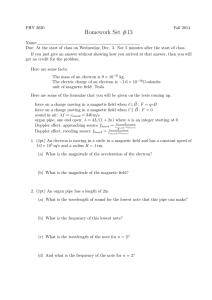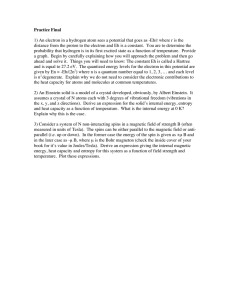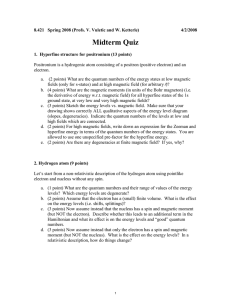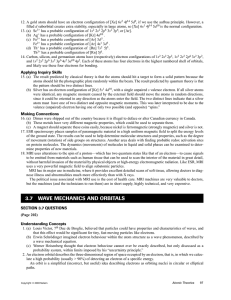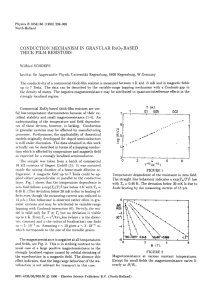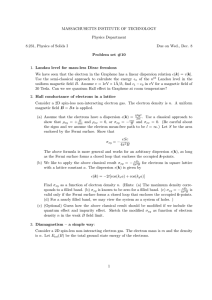Quantum Hall Effect and Fractional Quantum Hall Effect
advertisement
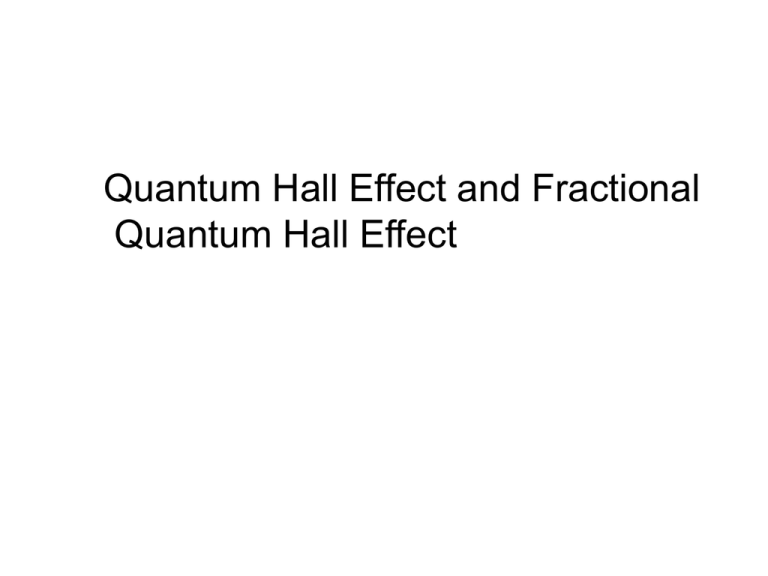
Quantum Hall Effect and Fractional Quantum Hall Effect Hall effect and magnetoresistance Edwin Herbert Hall (1879): discovery of the Hall effect the Hall effect is the electric field developed across two faces of a conductor in the direction j×H when a current j flows across a magnetic field H e the Lorentz force FL v H c in equilibrium jy = 0 → the transverse field (the Hall field) Ey due to the accumulated charges balances the Lorentz force quantities of interest: magnetoresistance R ( H ) Rxx (transverse magnetoresistance) Hall (off-diagonal) resistance R yx Vy Ix Vx Ix resistivity ( H ) xx Hall resistivity yx Ey the Hall coefficient RH Ey RH → measurement of the sign of the carrier charge RH is positive for positive charges and negative for negative charges jx jx H Ex jx 1 f e E v H c dp 1 p equation of motion e E p H mc for the momentum per electron dt px 0 eE p x c y in the steady state px and py satisfy p 0 eE y c p x y force acting on electron c eH mc cyclotron frequency frequency of revolution of a free electron in the magnetic field H e 2 mc r c r H c multiply by ne / m the Drude model DC conductivity at H=0 j ne ne m jy 0 0 jx 0 E x p m 2 0 E x cj y jx 0 E y cjx j y H E y c jx jx nec 0 the resistance does not depend on H RH 1 nec c c ~ 1GHz 2 at H = 0.1 T RH → measurement of the density c 1 weak magnetic fields – electrons can complete only a small part of revolution between collisions c 1 strong magnetic fields – electrons can complete many revolutions between collisions c 1 j is at a small angle f to E f is the Hall angle tan f c c c ~ 10GHz / T 2 Higher Mobility= fewer localized states Single electron in the lowest Landau level Filled lowest Landau level Modulation doping and high mobility heterostructures This was just the beginning of high mobilities At high magnetic fields, electron orbits smaller than electron separation new quantum Hall state found at fractional filling factor 1/3 Even higher mobilities result in even more fractional quantum Hall states Uncorrelated ? = 1/3 state Correlated ? = 1/3 state Whole new concept of a “Composite Fermion”




